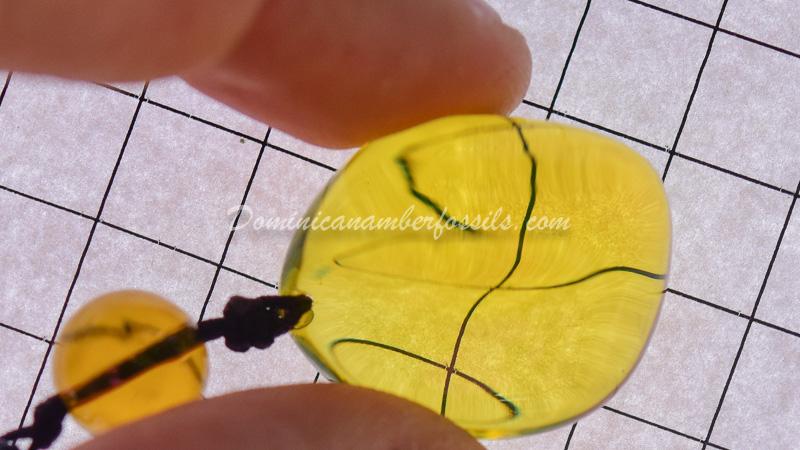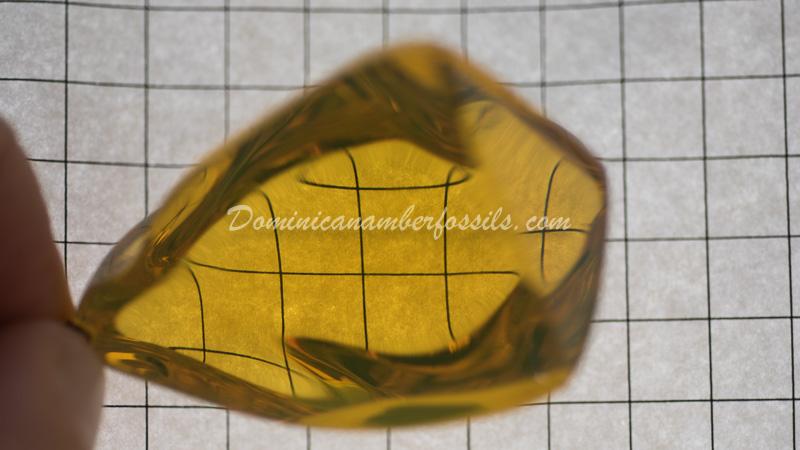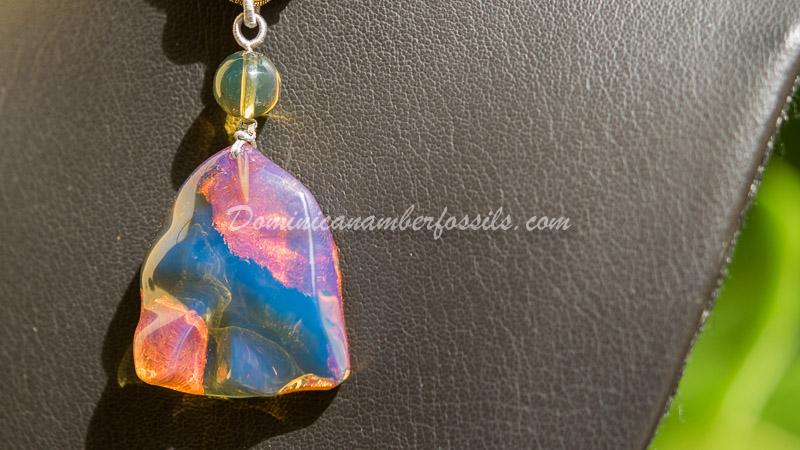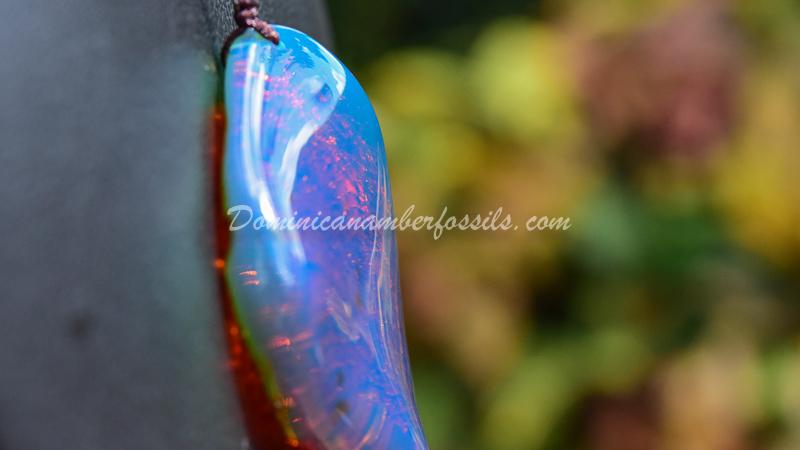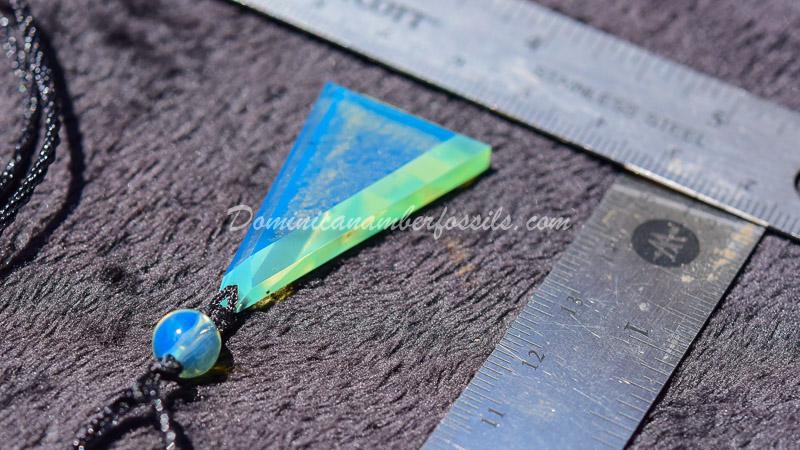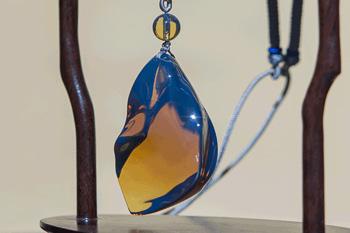
Usambra Effect on Dominican Blue Amber wihout any background due to ideal light incidence and specific shape of the Amber Piece.
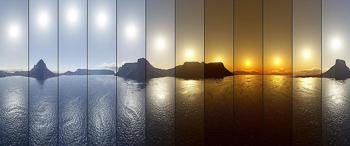
Typical evolution of natural color temperature during a standard day.
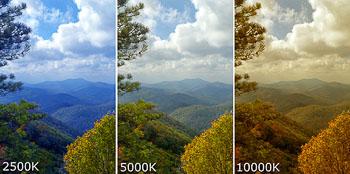
Influence of color of temperatures on perception of colors (Digital Camera - White Balance Settings - Equivalent of Change of Light Source).
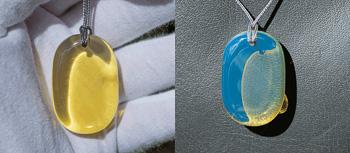
Color Comparison on Dominican Blue Amber, Clear vs Dark Background under the same exact lightning conditions.
Colors and Amber, The Infinite Game
In the Gem World, Amber is a Very Unique Gem Material. A same sample of Amber, on the exact same ligthning conditions will display different colors depending on his background (Reflected Light “Key Color” Vs Transmitted Light “Body Color”). The darker the background, more dramatic will be the changes. This is actually a Superficial Phenomenom due to the fact that Amber is a Long-Wavelenght pass filter with a Half-Pass Wavelenght around 530nm in its spectral transmittance. This very particular Superficial Phenomenon is called Usambara Effect or Emerald Filter Effect.
Amber from The Dominican Republic displays a large variation of Body Colors (Hues), from almost colorless very light yellow in the whole spectrum to brown, goint through brownish-red, red, redish-brown. This body colors are more or less « Vivid » according to their respective degree of Tone and Saturation.
All Variety of Amber from Dominican Republic in addition to their primary body color will display other colors according to various factors.
- The Background in which the specific Amber is Observed (More or Less Dark)
– Specificities of the Amber Piece, Thickness, Shape, Quality of Polish...
- It's own Colorimetric Particularities, Hue, Tone, Saturation.
- It's Particular Chemical Composition
- The Percentage and Type of Inclusions (The more Included, more Saturated will be the Hue)
- Global Lightning Conditions depending on the following aspects
Light Source & Temperature (ºKelvin): Incandescent, Halogen, Discharge (Fluorescent tubes, CFL, Sodium Vapor, Metal Halide) or LED. Direct or Reflected Light. In Case of Natural Sunlight, the general conditions of the atmosphere, moment of the day (Time) Cool colors temperatures on sunrise to warmest ones on sunset, Overcast conditions...
Intensity: Strength of light Source expressed in Lumens or equivalent Whatt
Light Incidence: Angle by which the light is displayed to the subject. A 45º Angle being the most inluent one.
In Term of Colors on Amber a Particular Case Must be Approched
During the Fossilization process which take over Million of years, Resin (Which turn Amber) has been deeply deposited for a very long time and exposed to various Thermal and Geological Forces. According to Geological events causing remobilization of Amber Bearings close the surface (Mountain Formations) and by consequence close the oxygen from which it was deprived, certain Amber Pieces develop a superficial very characteristic oxydation. This superficial oxydation varies from very light orange on the full spectrum to black. It brings a unique effect to a very small proportion of Dominican Amber called locally "Ambar Casca Roja or Flor de Tierra" (Red Skin or Outcrop Nuggets - Romantic traduction of Flor de Tierra being - Ground Flower), this Solid Coloration can be seen by Transmited as well as Reflected light. As this is ONLY a Supercial Oxydation, this "Layer" may desappeared according to the process of Grinding / Polishing and reveal then another coloration. Master Carvers often play with this particularity in order to achieve incredible pieces of art. See below some exemples of what we achieve along the years with such exceptional nuggets.
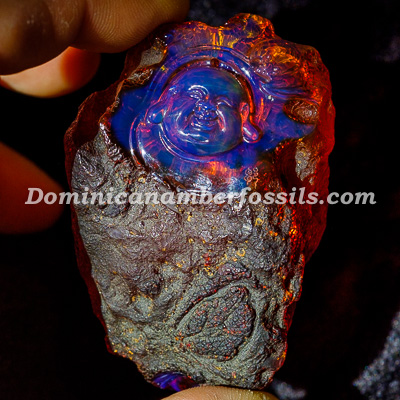
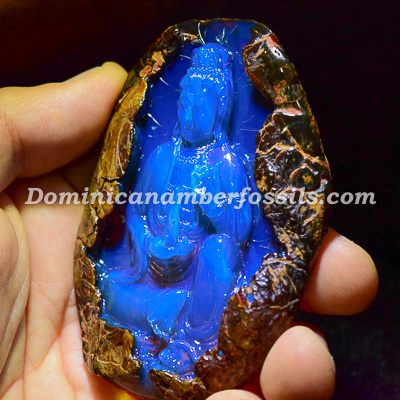
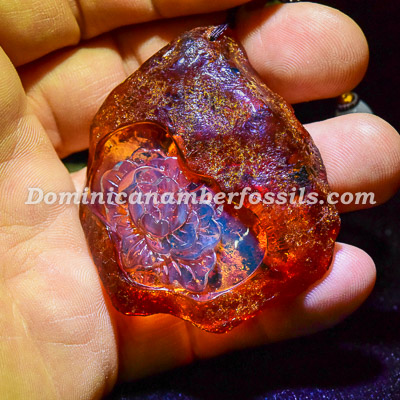
Dominican Amber Body Hue's - (Transmited Light)
Dominican Amber Body Hue's - (Transmited Light)
Related Articles

